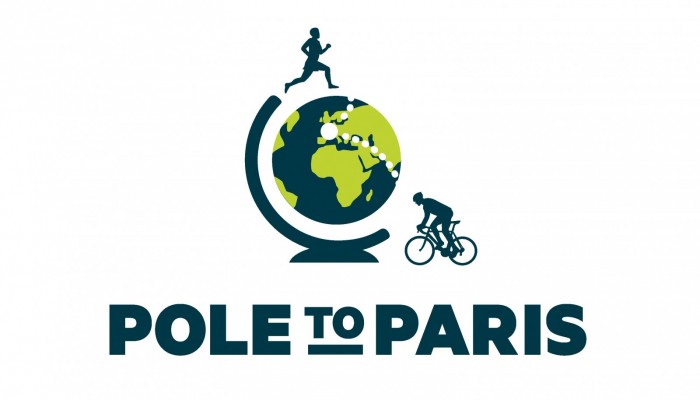
What do polar bears and emperor penguins have to do with the Eiffel Tower and Notre Dame? Pole to Paris has the answer.
Erlend Moster Knudsen earned his PhD in climate dynamics after four years of research from the University of Bergen, Colorado State University and University of Alaska Fairbanks on Arctic sea ice and its interaction with atmospheric circulation. He took some time to answer a few questions about the project he started with Daniel Price, a fellow polar climate researcher and PhD in Antarctic sea ice . The project is called Pole to Paris.
What is Pole to Paris?
Pole to Paris is a climate awareness campaign and outreach project ahead of the 21st Conference of the Parties (COP21) in Paris this year. This December in Paris, the United Nations will meet to negotiate a “climate deal” to pave the way toward a global carbon free future by reducing anthropogenic greenhouse gas emissions. If we plan to curb our emissions, it is of paramount importance that a consensus is reached under COP21.
The aim of Pole to Paris is to raise the understanding on climate changes in general and the importance of COP21 in particular. The campaign follows two journeys from the poles to Paris – by bike and running shoes.
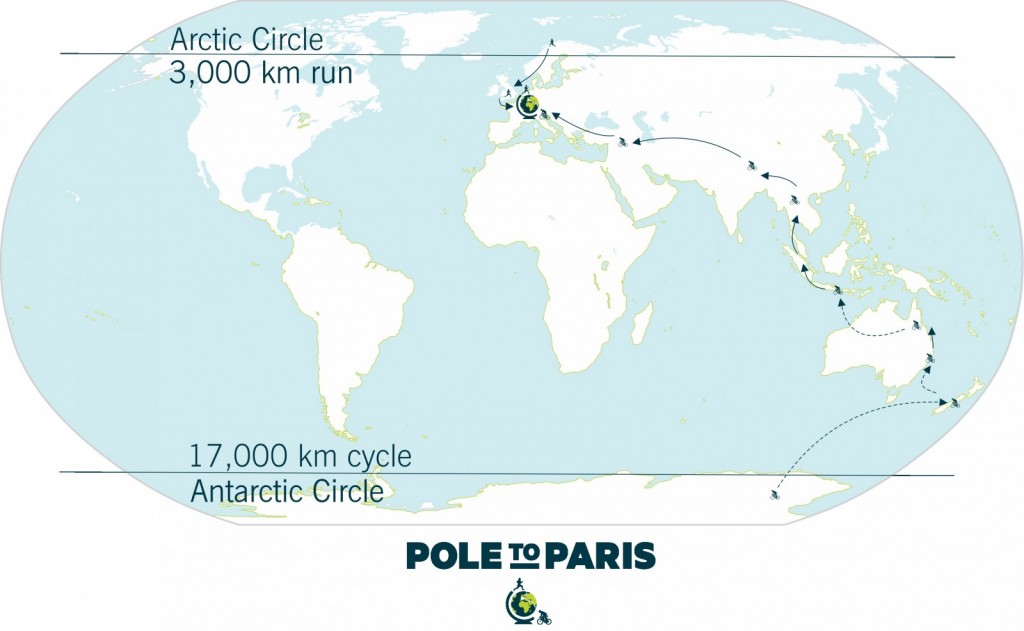
Map roughly showing the route of the 17,000 km-long Southern Cycle and 3000 km-long Northern Run (credit: Pole To Paris)
Could you tell us a bit more about these biking and running journeys?
The 17,000 km Southern Cycle has gotten off to a good start. Carrying with him a flag from the Antarctic continent, Daniel has already biked across Australia and Indonesia, and is now biking through Malaysia. His next stops will be Thailand, Bangladesh and China, where he will spend weeks documenting stories on sea level rise, glacial melt and pollution.
Later this year, I will start the 3000 km-long Northern Run from Tromsø, running with a flag from the North Pole. After 2000 km through Norway, I will team up with other environmental scientists from Edinburgh to bring the flag to Paris. There we will meet up with the cyclists from the south.
What drives you, a PhD in sea ice, to put on your running shoes and run across Europe?
As we were going toward the end of our PhDs, Daniel (Pole to Paris director) and I (Pole to Paris deputy director) realized more and more that people generally are unaware of the clear results of climate science. There is a large gap in the understanding between academia and the general public. We want to bridge this gap by doing something as crazy as biking and running across half of the globe to raise awareness of climate change, document climate change and bring personal stories of climate change from the corners of the world to COP21.
Running and biking, we interact with people who we meet and who join us along the way, we give school presentations and take part in open climate events. As biking and running climate scientists, we are closer to the group of people science should serve: the general public.
Why are you starting from the Poles?
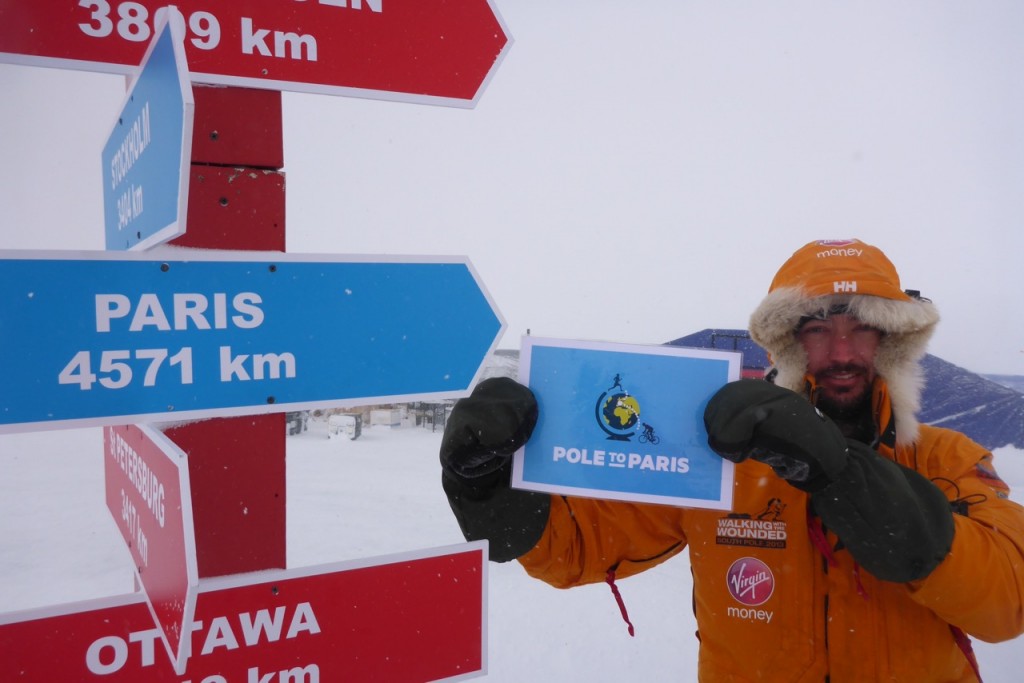
Pole to Paris friend Seamus Donaghue at the North Pole. On an expedition there, Seamus and his team mate Eric Philips brought the Pole to Paris flag to the northernmost point for his scientific colleagues of Pole to Paris. Erlend will bring this flag on from Tromsø. (credit: Eric Philips)
The starting points of the two routes are chosen deliberately. Being arguably the regions with the fastest signs of climate change, the Antarctic and the Arctic are changing in front of our eyes. Not that many of us go to the two poles. But the ones who do repeatedly are overwhelmed with unprecedented facts.
My friend Will Steger is one of them. Having been the first to reach the North Pole by dogsled unsupported and the first to cross the whole Antarctic continent by dogsled with an international team of five in the late 80’s and early 90’s, his team of explorers were the first also to cross the Arctic Ocean by dogsled in 1995. More than that, they are most likely the last ones to have done so, due to rapid sea-ice melt.
The melting of the Arctic sea ice is indeed alarming. The Arctic Ocean is loosing its lid – fast. In addition to the enhanced heat fluxes into the cooler atmosphere in most of the year, the ice-albedo, lapse-rate and Planck feedbacks each accelerate the warming in positive feedback mechanisms. Additionally, a melting Arctic also causes changes in the oceanic and atmospheric circulations, with alterations in poleward transports of heat and moisture.
The interaction between atmospheric circulation and the melting Greenland ice sheet and Arctic sea ice was the topic of my PhD. Associated with these melts, we found high-latitude storminess to decrease in summer (Knudsen et al. 2015). Instead, cyclones generally tracked more zonally, giving wetter, cooler and stormier summers in north-western Europe and around the Sea of Okhotsk. Coincidentally, unusually warm conditions have prevailed in a wide region from the Mediterranean to East Asia during summer months of anomalous high Arctic sea ice melt. These are areas of already high temperatures climatologically.
A stronger link between Arctic sea ice melt and mid-latitude extreme weather was first put forward by Francis and Vavrus (2012). They linked the Arctic amplification (the enhanced warming in the Arctic compared to the average warming across the globe) to a wavier the jet stream, where more stationary weather systems increase the risk of extreme weather conditions in midlatitudes. Since then, the theory has been and is still heavily discussed within the scientific community. Nevertheless, if their hypothesis should hold, a large fraction of the global population would need to reconsider the Arctic climate changes as too distant to reflect upon.
Of course, an even more alarming scenario is if the entire Antarctic ice sheet and the Greenland ice sheet were to melt completely. This would result in a sea level rise of over 60m. This will probably not happen within our lifetime, but enough ice has already melted to cause severe troubles for many Pacific Islands.
(credit: Pole to Paris)
How do you plan to do climate outreach along the two journeys?
Along the routes, we document climate changes and personal stories of environmental changes seen throughout their lifetime, but also the positive means by which action toward a more sustainable future is made. We give school and community presentations, arrange open climate events and unite people across a wide range of backgrounds. We speak up about climate change, knowing that we must work hard to stay objective in a politicized world.
How is your experience with Pole to Paris so far?
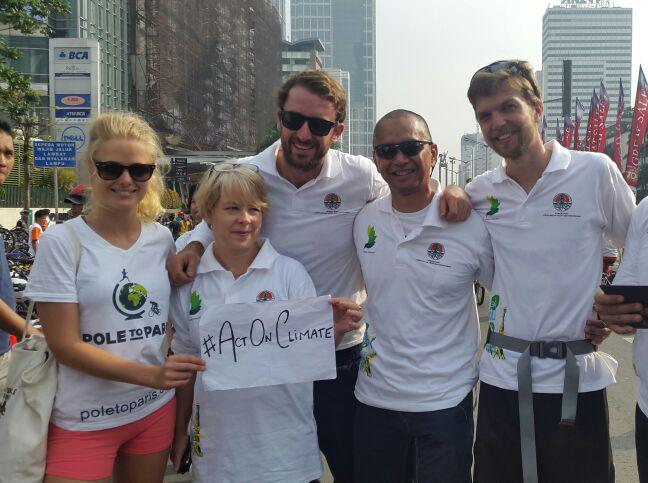
From left to right: Oria Jamar de Bolsée (EU and Indonesia coordinator in Pole to Paris), Beate Trankmann (head of UNDP Indonesia), Daniel Price (director of Pole to Paris), Toto Sugito (leader of Bike to Work Indonesia) and Erlend Moster Knudsen (deputy director of Pole to Paris) from car-free Sunday in Jakarta, Indonesia (credit: UNDP Indonesia)
Pole to Paris has gotten off to a really good start. We got a lot of attention on Indonesia, a key country for bridging the demands of developing and developed countries under COP21 negotiations. There, Daniel (the cyclist), Oria Jamar de Bolsée (EU and Indonesia coordinator) and I (the main runner) worked to raise the awareness of climate changes. This brought us from rural places to megacities, from preschools to high schools and talking with people from farmers to ministers. It has been very engaging.
While climate change is something distant for many of my fellow Norwegians, many Indonesians depend on the land and its resources. While human activities, such as deforestation, overfishing or lack of waste management, are the main source for this environmental degradation, climate change is also appearing in front of their eyes.
So perhaps it is not that far from the Arctic and the Antarctic to Indonesia after all? The Polar Regions are indeed shaping the coast of the archipelago, through sea level rise and erosion.
What do you expect from Paris and COP21?
The French capital is the arena for the most important climate summit this far – COP21. Pole to Paris is using bike, running shoes and our background in environmental sciences to raise awareness about the importance of this meeting.
While there, we will work with partners to arrange open events and share stories from all the corners of the world we have biked or run through. The stories of the farmers and the fishermen, the stories of the Antarctic and Arctic – all are important to remember when our global leaders will make their decision this December.
To conclude is there something you would like to say to your fellow environmental scientists?
In my mind, funded by society, scientists have a responsibility to speak up about our research. Research on climate change is too vital and pressing to keep within academia.
As environmental scientists, we have the knowledge and the tools. One of the latter is our voice. We want to hear yours too.
Want to know more about Pole to Paris? Check us out on poletoparis.com, Facebook, Twitter and Instagram.
Edited by Sophie Berger

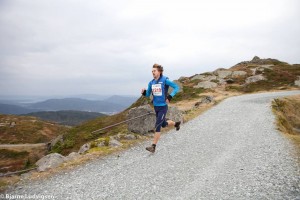
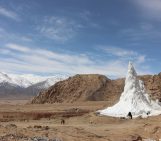
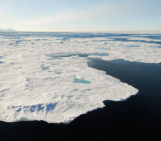
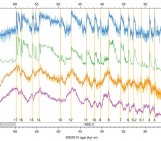
![For Dummies – How do wildfires impact permafrost? [OR.. a story of ice and fire]](https://blogs.egu.eu/divisions/cr/files/2019/10/DJI01011-161x141.jpg)
Pingback: Cryospheric Sciences | Image of the Week — Ice Sheets and Sea Level Rise (from IPCC)